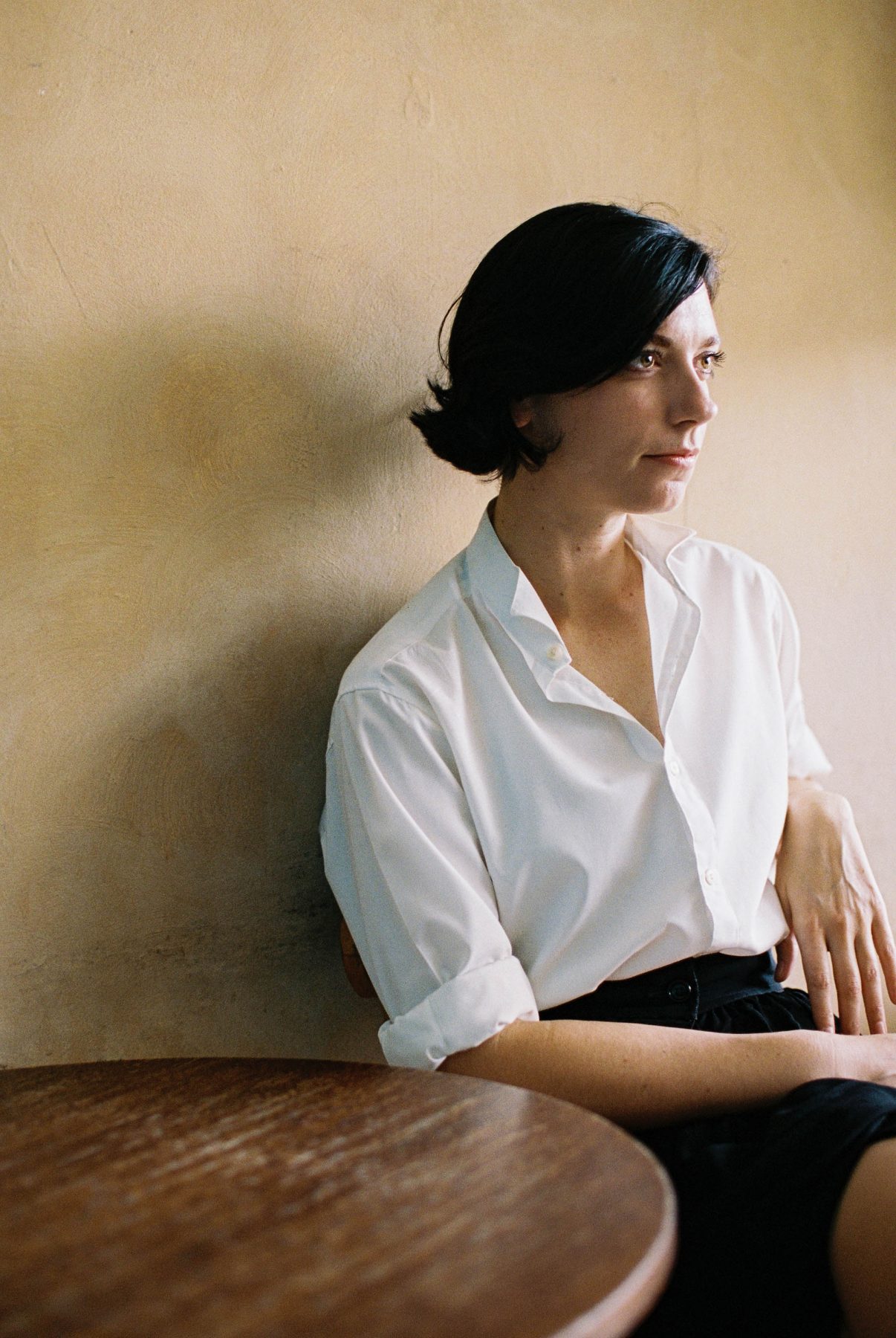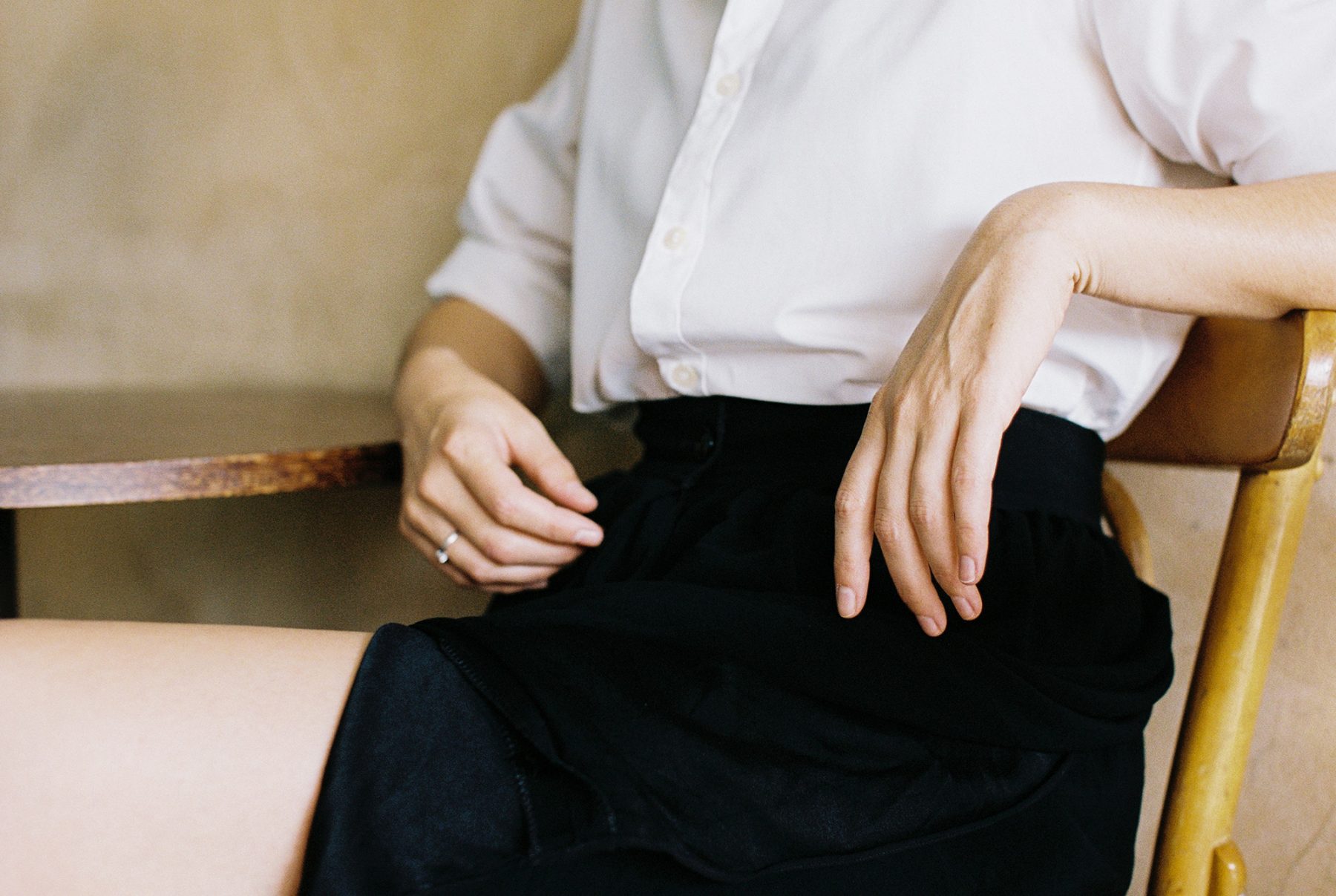
Profile
Mia Veur
Mia is a film wardrobe stylist and also works for Melbourne based consignment store, Bruce.
Tell us about your experience in the fashion industry.
I’ve been very lucky to have worked with a number of people who have shaped Melbourne style. At 21, I worked for Christine Barrow: famed George’s buyer and owner of Christine. She was tough but gave me an education in creating a story with clothes and accessories. I still use her tips today. For instance, if you have an accessory on your shirt or sweater, always put it close to the face in order to frame it. This really works.
I joined LEFT in the mid 2000s. While there, I was taught by the late Nellie Panay—a great style innovator and buyer in Melbourne—to look at the relationship between people and clothes. She introduced me to artisanal ‘slow’ fashion; designers like Carpe Diem, Paul Harnden and M.A+. I took over as Buyer not long after, attending shows and showrooms in Paris for the likes of Comme des Garçons, Yohji Yamamoto, Gareth Pugh and M.A+.
I then worked for Alpha60 and through this experience really got to learn more about contemporary Australian fashion. I also started doing small projects in film, web series and theatre in the costume/wardrobe departments. Since then, I’ve been working on various projects. I met Emily and Daniel of Bruce consignment two years ago and am still working with them. I love their store and the philosophy behind it. I love the way they curate this incredible catalogue of designers: from artisanal Japanese and Italian labels to Japanese avant-garde and classic brands. It’s a sustainable way of dressing, where one chooses from brands that offer beautifully finished garments made to last.
In what ways do your personal values shape your work?
I’m trying to be more ethical and mindful when it comes to fashion, as well as other parts of my life. It’s difficult, but with little steps it gets easier. Bruce is great for witnessing the lifecycle of a well-made piece of fashion. I love seeing people breathe new life into a garment that no longer serves a purpose for its original owner.
Working in film is similar. Through whatever means possible, you are using everything you can source to create a character, and to tell a story with that character’s clothes. You can convey so much with just a little piece here and there. I believe dressing yourself should be slow and considered like this as well.
How would you describe your relationship with style / clothing?
My relationship with clothing is becoming easier as I get older; I think you see yourself in a better light as you age. I no longer have an insatiable need to purchase new pieces all the time. I wait it out and, if I really can’t live without it, then I’ll buy it. I’m starting to notice now though that I have no casual clothes. I really should get a grip and buy a simple tee shirt—but the right one.
I feel like I’m beginning to know what suits me, though I think I’ll always wear mini skirts and some kind of leather piece. I don’t want to become so ‘classic’ that I just fade away. A white shirt, but with no bra. A sheer dress, with a heavy shoe. It’s good to create a balance.
Mia Veur
“I’ve also come to realise that no matter how dressed up you are, it’s really how you are with people and how you carry yourself that matters. That’s what makes a person stylish.”

What does ‘slow fashion’ mean to you?
Slow fashion is choosing to wear clothes that are made to last. Good fabrics, good cuts, not a quick fix; you’ll have them forever and they’ll wear well.
I sometimes think that the Slow Fashion movement could be on the way to becoming elitist. Not everyone can afford to buy the pieces they would like to own and instead have to substitute for a cheaper option; however, I still think we can all research what we're buying in an attempt to make an informed choice. Am I buying something made in sweatshop conditions? Is this company ethical? And most importantly, ‘Do I really need to buy this?’ These are all questions to ask yourself before you buy.
How has your attitude towards fashion changed as you've aged?
My attitude towards fashion has changed considerably over the last few years. I’m now wanting less quick fixes and more lasting, good quality pieces. It’s very freeing, to have only a small wardrobe of pieces I love. I mean, I still feel like I need more but I’ve also come to realise that no matter how dressed up you are, it’s really how you are with people and how you carry yourself that matters. That’s what makes a person stylish.
Have you developed a personal uniform?
At the moment I am appreciating a white cotton shirt with a little black skirt—like a waitress uniform. It may sound boring but I really am enjoying a pared back look that’s functional but a little sexy.
I see people in their personal uniform of a white tee shirt and blue denim on the street all the time, and it really is the best uniform. It makes you look so fresh; the body and face do the talking. I wish I could do this, but I look ridiculous! I never feel comfortable in denim, so instead I wear my little waitress uniform. It suits me fine, as I don’t do casual very well.
Who / what do you look to for style cues and why?
I believe style cues can be taken from everywhere you look. Film is a rich resource for inspiration. So many complex characters and scenarios. Watching a person’s style evolve over the course of a film is fascinating, though you have to be careful not to copy. You have to be your own character.
I grew up reading fashion magazines, history books and National Geographic. I think my personal style comes out of all the influences I grew up with. I also believe you need an element of humour in an outfit, a dash of bad taste. It keeps things fresh. Otherwise you look like you have no substance, and that’s not style.
Mia Veur
"In order to change the course of the fashion industry, we need to educate people about buying less, buying better and buying ethically—breaking the cycle of consuming more than what we need. Maybe everyone just needs a hobby."
Is there a garment that has had a special place in your life, or is linked to a treasured moment?
I have two things. The first is a black crocheted dress with embroidered strawberries and jasmine on the bodice. It’s very Sicilian, very romantic. I was wearing it the day I met my boyfriend.
The other is a black Adele Palmer ‘bathrobe’ coat that was my friend Andrew’s—we bought it at Savers. I wore it with a pair of chrome-like Giuseppe Zanotti heels to a show at the Palais de Tokyo during Paris Fashion Week many years ago. It looked fantastic, and I wish I still had it.
What in particular do you love or dislike about the fashion industry?
I love that fashion has inspired a wave of films—so many great documentaries and shorts, so many untold stories of the people behind the clothing. People want to know the story and the philosophy behind a garment. They want to live it.
When you look to the future of fashion, what do you see? What systemic changes do you think need to be made in order for the industry to move forward?
I really hope the general public becomes bored with high street fashion. I would love to see the return of smaller boutiques selling smaller-run items, and more local content. Melbourne used to be full of smaller fantastic boutiques, and now I see so many empty stores. It’s a real shame.
You can’t get the same level of service and knowledge of the garments from high street stores. Unfortunately, people don’t want that interaction anymore. Buying clothes has become like going to the supermarket; people want to get in and out as soon as possible. All those clothes, it’s such a waste! Where do they go? Every time I walk past a high street store, I can’t help but feel that all the clothes look so unloved.
In order to change the course of the fashion industry, we need to educate people about buying less, buying better and buying ethically—breaking the cycle of consuming more than what we need. Maybe everyone just needs a hobby.
Photography: Claire Summers
Production Sigrid McCarthy

